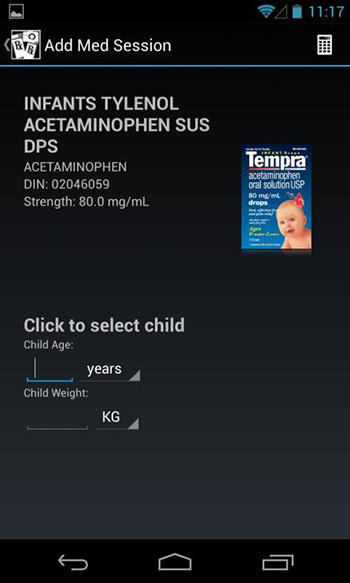May 7, 2013

Niraj Mistry, Pooja Viswanathan and David Xue joined forces in ECE Professor Jonathan Rose’s mobile app class to solve the problem of under- or overdosing common children’s medications.
The resulting prototype app, dubbed Snap’n’Dose, has garnered national media attention.
“Niraj came to us with the problem and David and I sat down and said: ‘OK, how can we actually design this app and how can we get the data that we need,’” Viswanathan recalls in the story by national health reporter Sheryl Ubelacker.
Snap’n’Dose lets users take a picture with their phone of the drug identification number (DIN) present on every medicine box, enter their child’s age and weight, and get an easy-to-understand dosage for that particular medication. Parents can also save children’s detailed profiles, track symptoms and set a timer to remind them when it’s time for the next dose.
“Any parent who’s had to deal with a child falling sick, it can be so stressful,” says Viswanathan. “We wanted to design something to help with that.”
The group’s work has been highlighted in The Globe and Mail, Metro, The Vancouver Sun, The Province, The Star Phoenix, The Ottawa Citizen, CTV News and overseas in Top News Emirates.
From the article:
“I think it’s a great app and it was a wonderful collaboration between a doctor and the computer scientists to do something new and right on point,” [Rose] says. “Pooja and Niraj and David are really keen to keep doing this. They’re really excited by all that’s possible in this.”
Mistry says that if parents and caregivers are more comfortable with giving their child the correct dose of an over-the-counter medication, it can be empowering for them but also improve child health overall.
“So this is definitely a way to help that,” he says. “It’s a really simple app solving a potentially serious problem.
“And it’s amazing the capability of phones. They’re not just phones anymore — they’re computers in your hand that can really change the way health care is delivered.”
More information:
Marit Mitchell
Senior Communications Officer
The Edward S. Rogers Sr. Department
of Electrical & Computer Engineering
416-978-7997; marit.mitchell@utoronto.ca